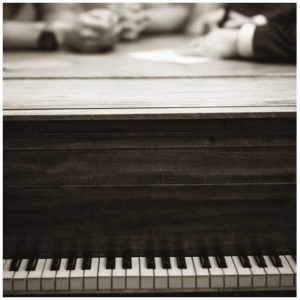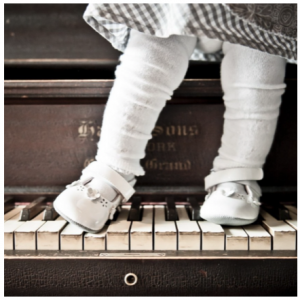Looking for professional and affordable piano tuning in Grand Rapids?
You’ve come to the right place!
At Herrema & Sons, we’re proud to help your piano stay in tune so you can enjoy playing it all year long. Customer care is our top priority, and that’s why we’ve created a small team and picked the best people to train in this advanced skill.
CALL NOW TO SCHEDULE YOUR NEXT TUNING
616-820-0280
Ext. 2
Want to keep reading?
Great, we love teaching people the piano basics.
Please read some of the below information on piano tuning as most people we talk to are unaware, or misinformed, about some common and important piano tuning information.
TUNING TIPS & FAQ
How soon after moving a piano into a new home can it be tuned?
Your piano is made of wood, and wood reacts to moisture and temperature. Once a piano is moved into a new home it needs to acclimate before tuning. This takes 7-14 days. If you happen to be one of our upcoming moving customers, and you’re in the Grand Rapids area, we give $25 off your first tune.
How much does tuning cost?
$100-$150 based on location and what the piano needs.
How often should pianos be tuned?
In a perfect world, four times a year–once with each quarter or season cycle. But it’s not a perfect world and your house is probably not a symphony hall, so the next recommendation would be twice a year; summer and winter, or 2-3 weeks after your A/C turns on, and 2-3 weeks after your Heat turns on. We realize it’s an even less perfect world though 🙂 so once a year is the minimum recommendation to keep a piano healthy and maintained.
Why does it need to be tuned two to four times a year?
The piano was designed to hold an incredible amount of tension. 20-tons of combined string pressure to be exact. From the frame, to strings, to tuning pegs; it’s a giant instrument/furniture piece made of metal and wood. Wood expands and contracts with the change of humidity. The tuning pegs are inserted into a wood pin block. As the wood swells and shrinks around the peg, it can wear down to the point where the tuning peg won’t hold tension anymore, and once that happens, the pin block costs thousands of dollars to replace or the piano is now junk–because it can’t hold a tune. So to prevent this, it is recommended by manufactures and technicians to tune the pegs each year to keep the pin block in tact.
Secondly, when the tension drops, it affects the frame, strings, pegs and moving parts.
How long is a tuning appointment?
About 1-2 hours on average. Depends on how far dropped in pressure and out of tune it is, and also how old it is, as older pins are often looser and make the tuning process a bit more difficult. Many people imagine an expensive grand would cost more to tune, but it’s the other way around. Old pianos often have loose pin-blocks and strings made of metal that are more flexible, making the tune more time consuming.
What does A-440 Mean?
A-440 means that the key of “A” above Middle “C” when played vibrates 440 times a second. This is also called Standard, Concert, or Factory pitch. There has to be a standard pitch so that all musical instruments will play notes of like pitch. It’s the same principle that says every foot ruler is 12″ long. A-440 makes it possible for a person with a clarinet in Germany, for example, to play music accompanied by a piano made in New York–or any other place.
How is a piano tuned to A-440?
The piano tuner begins with a tuning fork or digital instrument, calibrated to read the note beats. The tuner tunes the “A” to the fork or device and then tunes the rest of the notes to that pitch, with various interval checks. Some tuners in the past would also use a middle “C” fork to create the same results.
Why is my piano out of tune? Why isn’t it at A-440?
All pianos leave the factory tuned to A-440. They are built to hold the 20-ton tension which results from the combined stretch of 220-230 strings. When a piano isn’t tuned often enough, the 20-ton tension, along with the changing of the seasons, pulls on the strings and coils, lowering the pitch and tension.
If my piano is below A-440, what must the tuner do?
This depends on how low the pitch has dropped. For example, if the piano is a quarter of a tone low, the tuner in raising the pitch back to A-440 needs to put so much strain on the frame of the piano that the resulting readjustment may go out of tune within a couple days. The lower the pitch, the greater the need for a second or even third tuning to stretch the strings back to proper tension. Your tuner will be able to assess how low the pitch is and inform you if one tune will do the trick, or if it will need multiple rounds. A good rule of thumb is that it will probably need 1 tune for every 5 years it hasn’t been tuned. For example, if your piano hasn’t been tuned in 5 years, it will need 2 rounds. If it’s been 10 years, it will need three rounds.
Wouldn’t it be better to just let the piano be tuned down to a lower pitch?
Picture a human spine starting to bend and arc. The muscles are designed to hold the spine in a proper vertical position. When they weaken or get damaged, the back starts to bend and other areas start to get thrown off. Tuning is for a piano what chiropractics are to the human back. Hard to believe as it is, the tighter the tension, the better for the piano, because that’s how it was designed to stand and play.
This is from the Piano Technicians Guild
- The piano frame was designed to hold the 20-tension and will be out of proper shape if it sits below that.
- If the pitch stays low, the person playing may develop the wrong kind of musical ear training. The pitch being at A-440 is important for the student so it sounds the same as their teachers piano and other instrumentalists and band members they will play with in the future. This is very important if someone in the house is learning to sing to the piano notes in the house.
- A lower pitch is less pleasing.
- The piano loses value if it cannot be certified by a tuner to hold A-440.
That’s all folks!
Thanks for reading and learning about Piano Tuning.
Any more questions? Give us a call, text or email.
CALL NOW TO SCHEDULE YOUR TUNE
616-820-0280
Ext. 2




